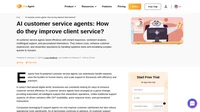Let’s be honest: keeping up with the current trends in customer service is essential if we want to succeed and have a significant impact in our industry. AI is currently the engine powering innovation in customer service. We’ll examine the top nine customer service trends for 2025 in this post, along with how AI is changing each one.
It’s not all about the bright and new, though. There is still a place for tried-and-true tactics, and we’ve prepared for you five guidelines that work every time, as well. So, are you ready? Get comfortable and join us on an exciting journey through the dynamic world of AI, customer care, and the trends shaping the future.
Table of Contents
- 1. AI in self-service
- 2. AI in customer service automation
- 3. Enhancing proactivity in customer service using AI
- 4. Customer service personalization with AI
- 5. Getting customer insights using AI
- 6. AI-powered feedback loops
- 7. AI-enhanced IVR systems
- 8. AI in customer service security
- 9. Improving the quality of support using AI
- Bonus tip: FlowHunt as a game-changer in customer service
- Additional tactics to keep up with current trends
- Conclusion
1. AI in self-service
Chatbots and virtual assistants, two examples of AI-powered self-service solutions, are transforming customer assistance by enabling customers to resolve their own problems more quickly and easily. These instruments are now necessary since clients are requesting more and more round-the-clock assistance. They began our list of customer support trends for this reason.
Using AI, modern chatbots can handle complicated questions and comprehend context and intent in addition to providing FAQ-style answers. By providing quick fixes, this evolution not only saves businesses money but also increases customer happiness.
LiveAgent’s support team member
Using AI, modern chatbots can handle complicated questions and comprehend context and intent in addition to providing FAQ-style answers. By providing quick fixes, this evolution not only saves businesses money but also increases customer happiness.
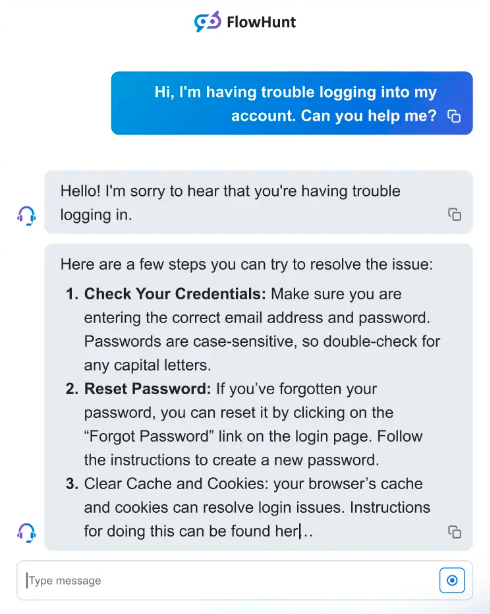
By 2025, 80% of customer service firms are expected to utilize AI-based self-service solutions, according to Gartner. It’s very likely that you have already dealt with a virtual assistant to fix a problem with your bank or phone.
2. AI in customer service automation
Automation itself is a necessity for today’s businesses wanting to be successful. Together with AI, they form an unstoppable duo. Let’s take a look at some examples of what they can do:
- AI can analyze the ticket content and context and provide the agent with possible answers.
- AI can summarize the content of the message and the whole ticket history; this way, the agents save a huge amount of time.
In the context of ticket categorization, AI-driven systems can automatically categorize, prioritize, and assign tickets based on the inquiry’s content and urgency. This leads to faster responses and ensures that issues reach the right team.
LiveAgent’s support team member
LiveAgent comes equipped with a handy AI assistant tool, designed to, among other things, simplify and improve your email responses.
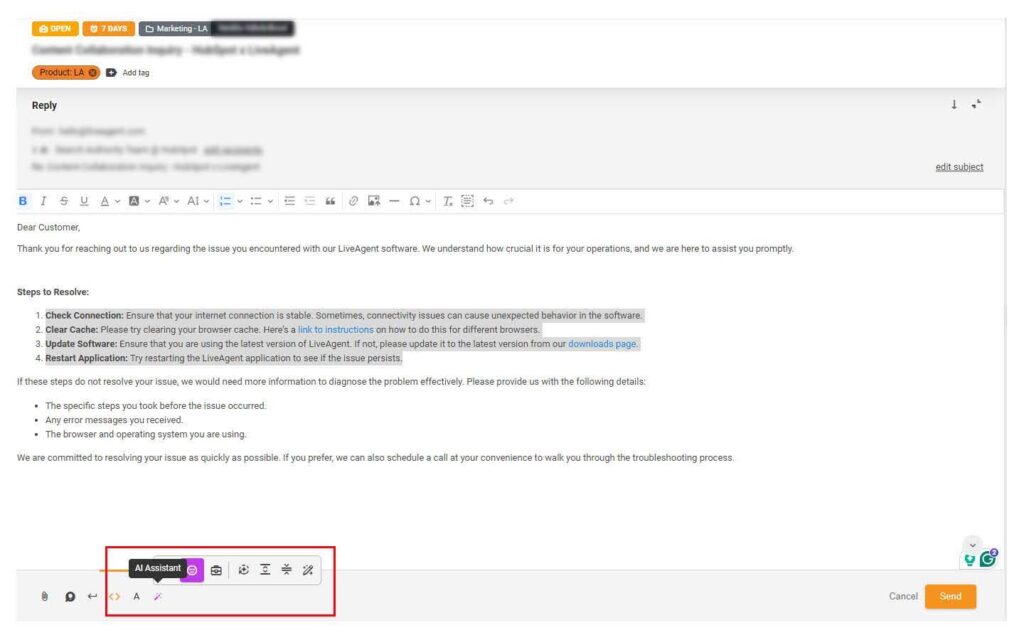
AI also helps manage ticket escalation by recognizing patterns and predicting which issues might need advanced intervention. This improves overall efficiency and reduces bottlenecks, ensuring your team works smarter, and your customers stay happy.
3. Enhancing proactivity in customer service using AI
Proactive support is becoming a key part of excellent customer service. Companies use AI and data analytics to anticipate customer needs and address potential issues before they become problems. This approach not only smooths out the customer experience but also builds stronger relationships by showing that your company cares about preventing issues.
Don’t underestimate the power of being proactive!
Let’s see some examples of how AI can contribute to the proactivity of customer service. AI is able to observe and learn your customers’ purchasing habits and, based on this, give them suitable recommendations. Alternatively, you can keep your customers updated about order details, billing information, and even sales using AI.
If we take a look into the telecommunication industry, here, proactive customer service would be mostly about resolving issues before they arise. For example, AI can proactively inform customers about potential outages or offer discounts as compensation if needed. Our AI friend can take care of this all, making your customer service truly proactive.
4. Customer service personalization with AI
Personalization is no longer optional—it’s expected. According to Accenture, 91% of consumers prefer brands that offer relevant recommendations. The whole point is to adjust your services right to your customers’ needs. This might be quite difficult sometimes, right? Given the fact that each customer has different needs and requirements.
AI can help you out here significantly since it can analyze massive amounts of data to predict, for example, what products or services customers might like, offer content that resonates with them, and even personalize the tone of communication. Why do so? This level of personalization increases customer engagement, loyalty, and satisfaction.
5. Getting customer insights using AI
To truly meet your customers’ needs, you need to see things from their perspective. AI offers powerful tools to help you do just that.
AI-driven analytics
AI-driven analytics have become a cornerstone of modern customer service, transforming how companies understand and engage with customers. The vast amount of data generated from customer interactions—across various channels such as email, chat, social media, and phone—can be overwhelming.
It is being said that AI is mostly helpful when handling massive volumes of data. This is exactly the case. Implementing AI into your customer service analytics you not only save a lot of time but also get the point of view the human brain can not.
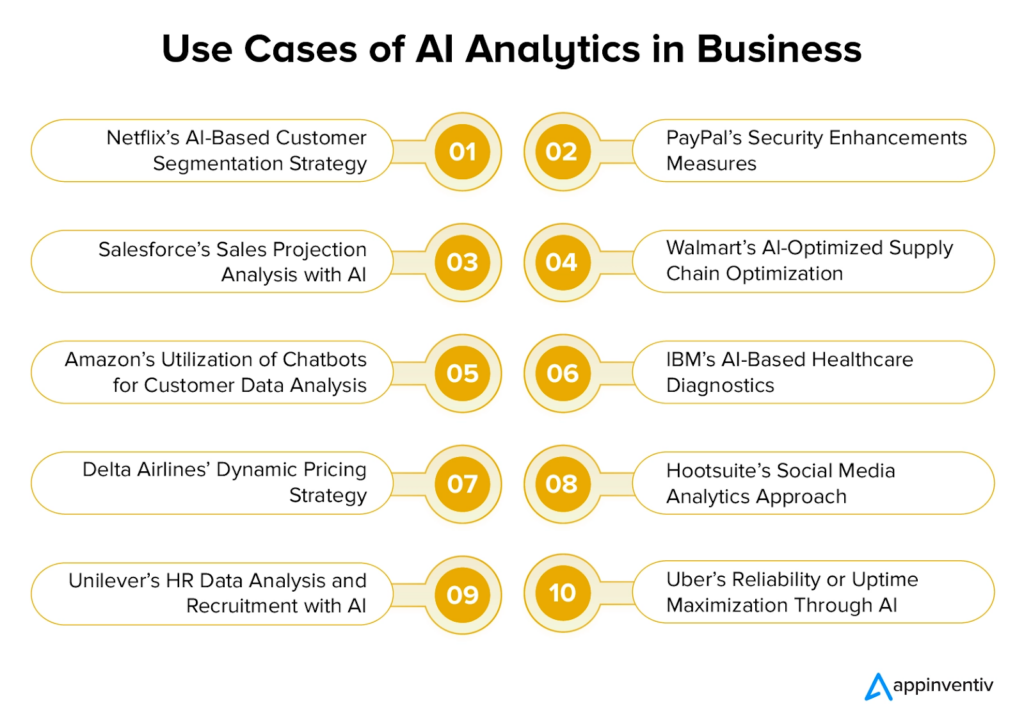
AI-powered analytics tools can process and analyze this data at scale. This provides actionable insights that were previously unattainable. Today’s analytics include real-time insights, predictive analytics, and custom reporting.
LiveAgent’s support team member
Customer journey mapping
Customer journey mapping is also evolving thanks to AI. We can say that it’s always been considered a trend in this field, but AI has pushed it even further. What used to be a static, one-time exercise is now a dynamic process that adapts to changing customer behaviors. AI-driven journey maps use real-time data, offering a more accurate and detailed view of the customer experience.
For example, to identify typical problems or behaviors, AI algorithms can monitor and examine consumer interactions across various channels, including social media, email, and live chat. In doing so, AI can give you a detailed study highlighting key touchpoints where customers experience friction or disengagement.
This is the point where machine learning and data analytics meet. AI-powered customer journey mapping always brings you up-to-date and relevant data. It is a dynamic model, thanks to which humans can focus rather on developing and implementing strategies based on the result maps provided.
6. AI-powered feedback loops
AI-powered feedback loops are key to continuous improvement in customer service. By analyzing feedback from every interaction, these loops allow companies to refine processes, update knowledge bases, and improve AI models.
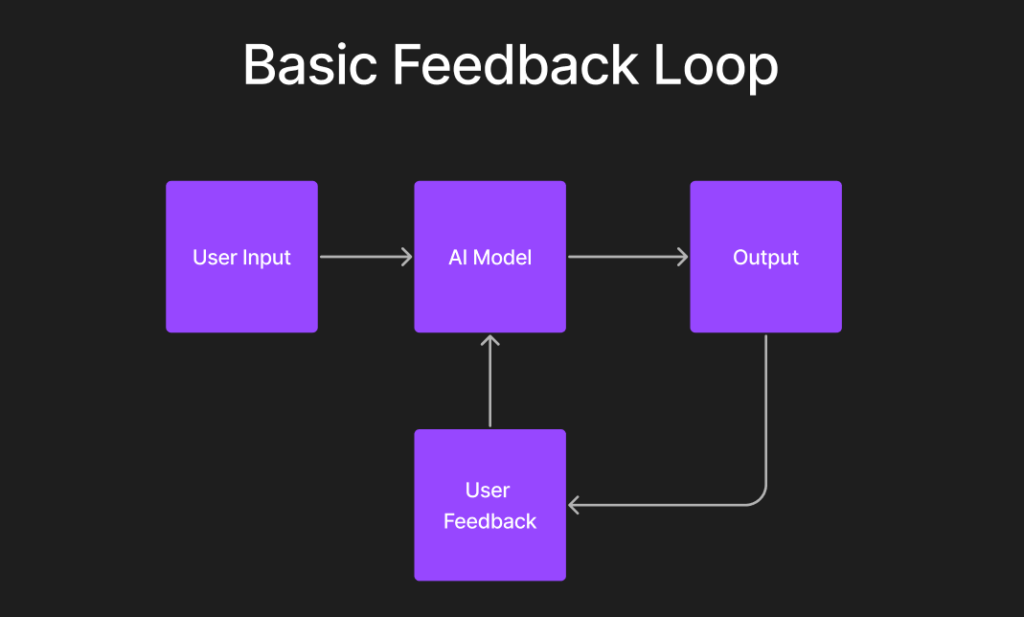
The biggest advantage of feedback loops is their ability to analyze sentiments, emotions, and, of course, text. By doing this, you get valuable insight into your customers’ perspective, and consequently, you can provide them with better, more tailored services. That is why feedback loops are part of our list of customer service trends.
7. AI-enhanced IVR systems
IVR systems evolve with AI, transforming from simple menu-based systems to more conversational and context-aware platforms.
This is where Intelligent Virtual Assistent (IVA) comes into play. It breaks down barriers between you and your customers, enhancing their overall experience. Instead of pressing numbers according to the instructions of IVR, IVA can get you right where you need to go.
We shouldn’t forget about smart routing here. Smart routing capabilities powered by AI ensure that calls are directed to the most appropriate agents or departments based on real-time analysis of the customer’s needs. This reduces the time customers spend navigating the system and increases the likelihood of quick and accurate resolutions, which improves the overall customer experience.
8. AI in customer service security
As digital interactions increase, security is becoming more and more important in customer service. AI-based authentication methods, like biometric verification and behavioral analytics, are enhancing security while keeping the customer experience smooth.
These AI systems can detect anomalies in user behavior, identify potential fraud, and authenticate users without cumbersome passwords or security questions. Remember, by focusing on security, you are also building trust.
9. Improving the quality of support using AI
The quality of customer support is a crucial factor in customer satisfaction, loyalty, and brand reputation. With the advent of AI, customer service trends are evolving at a meteoric pace.
It is because AI-driven tools are enhancing every aspect of the support process, from the efficiency and accuracy of responses to the depth of insights gained from customer interactions. We’ve seen many fields where AI can be a big help, but there is much more.
At the end of the day, it is all about improving and growing to be able to provide as good quality support as possible. But keep in mind the golden rule that sometimes less is more, and customers also prefer quality to quantity.
This article is dedicated to the hottest customer service trends, which, nowadays, are controlled by AI. In this context, we have prepared for you a bonus tip, a game-changing tool for your customer service as well.
Bonus tip: FlowHunt as a game-changer in customer service
FlowHunt is a cutting-edge AI platform designed to address key customer service industry trends by integrating advanced AI capabilities, mainly at the level of chatbots. It significantly enhances efficiency and personalization in customer service. Using the latest technology, this brand-new tool can enhance your customers’ experiences, too.
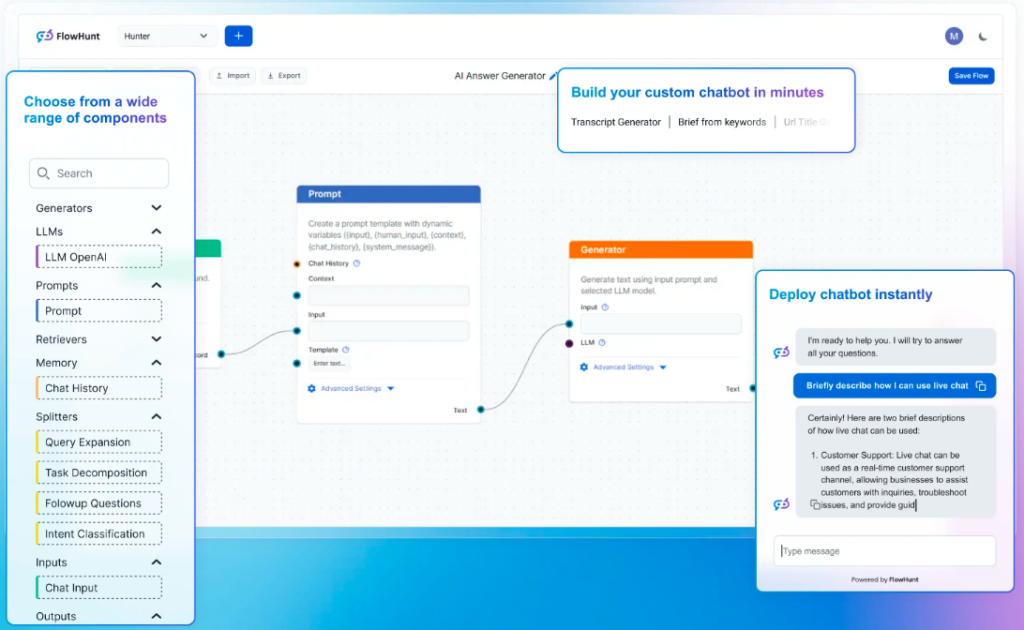
What makes FlowHunt revolutionary?
Here are a few tips from our experts on how FlowHunt can enhance your customer service:
- Streamlining operations: Automating routine tasks so human agents can focus on high-value interactions.
- Proactive communication: Asking users follow-up questions to keep the conversation going and provide them with an adequate amount of information.
- Continuous improvement: Offering detailed chatbot history, enabling humans to improve their chatbot answers.
- Ensuring consistency: Creating an unlimited amount of tools doing just what you need.
- High level of specialization: Strict control of credibility and relevancy of given information; opportunity to connect with your own knowledge and your own sources.
Additional tactics to keep up with current trends
New tools and techniques can boost how we serve our customers. However, it’s essential to align with them while remembering that the heart of great service lies in the basics.
Combining these two elements ensures that your customer service not only meets but exceeds expectations, building lasting relationships and trust. Let’s explore timeless best practices together.
Be proactive
We already discussed proactivity in the context of AI, but it is equally important here, too. Proactive customer service refers to staying one step ahead, anticipating needs, and solving problems before they arise. This way, you can build trust and show your commitment to customer satisfaction. Instead of waiting for customers to voice their concerns, proactive support involves reaching out first with solutions, updates, and guidance.
With LiveAgent, you can set up automated follow-up messages after a support interaction, check in with customers who have unresolved issues, or offer help when you see customers struggling on your website. Check our comprehensive step-by-step guide on how to automate your emails with follow-ups.
Be transparent
Transparency in customer service means being honest and open, especially when things don’t go as planned. This includes clearly communicating policies, admitting mistakes, and setting realistic expectations. Transparency builds trust and credibility, which are key to long-term customer relationships.
For example, if a service outage occurs, promptly informing customers about the issue and providing a timeline for resolution can prevent frustration and build goodwill.
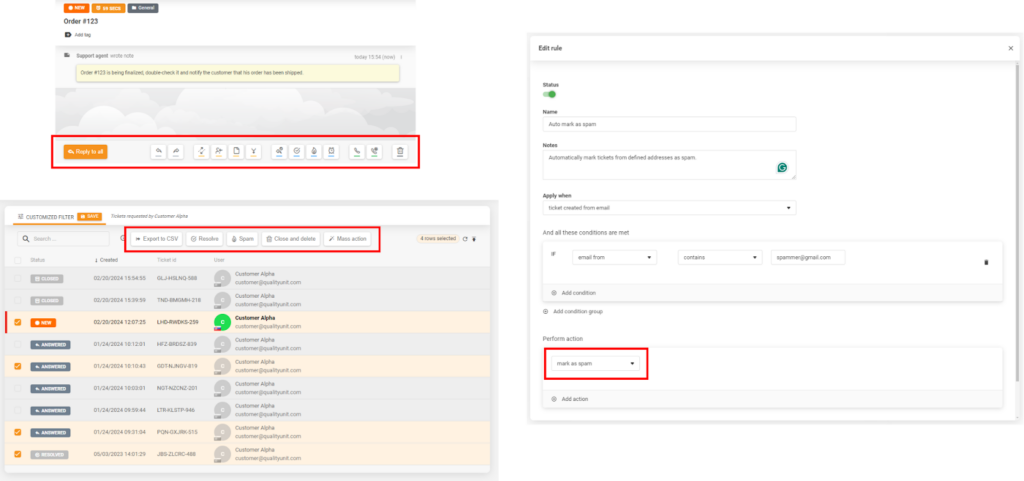
LiveAgent helps you maintain transparency with features like automated status updates for tickets, real-time communication during incidents, and clear knowledge base articles that explain your company’s policies and procedures. This keeps your customers informed and confident in your communication.
Keep learning and improving
Continuous learning and improvement are vital in customer service. This means regularly updating your knowledge base, training agents on new tools and best practices, and seeking customer feedback to spot areas for growth.
A well-maintained knowledge base benefits both customers and agents, providing quick access to information and speeding up issue resolution.

LiveAgent supports ongoing learning and improvement with a powerful knowledge base feature that makes it easy to create, manage, and update articles. Agents can quickly find the information they need, and customers can access solutions on their own, reducing support load and boosting satisfaction. Check out our step-by-step guide to creating an exceptional knowledge base.
Balance automation with human touch
While automation can handle routine tasks efficiently, it’s important to balance it with a personal touch. Automated systems can manage common queries, but complex or sensitive issues often need human empathy and judgment.
Balancing automation with personalized interaction ensures that your customers feel valued and understood.
Put your customers first
Always prioritize your customers’ needs, preferences, and experiences in every decision. This customer-first approach means understanding their pain points, actively seeking feedback, and delivering services that exceed their expectations.
By making customers the focus of your strategy, you build loyalty and long-term success. A Deloitte study found that customer-centric companies are 60% more profitable than those that aren’t focused on the customer.
Conclusion
As we move into 2025 and beyond, customer service is set to evolve rapidly, mainly because of emerging trends in customer service driven by advancements in AI, automation, and data analytics. In this article, we’ve explored key customer service technology trends influenced by AI.
We also introduced you to FlowHunt, a great solution that covers many of these trends. Remember the five timeless tips we’ve shared—they remain relevant no matter how much technology advances. You can implement most of them with LiveAgent, so don’t hesitate to try it out with our 30-day free trial.
Are you ready to elevate your customer service experience?
Empower your team and stay ahead of the latest trends with LiveAgent. Try it for free today!
Frequently Asked Questions
What is the future of customer service?
Future customer service will focus on efficiency and personalization, with AI handling routine tasks and human agents tackling complex issues. To stay ahead, businesses must embrace these changes now, delivering fast, tailored experiences that build loyalty.
What will be the customer experience in 2030?
By 2030, customer interactions will be seamlessly connected and hyper-personalized, merging physical and digital worlds through AI, VR, and AR. Companies that embrace these immersive experiences will thrive, while those that don't risk falling behind.
What role does sustainability play in the future of customer service?
Sustainability is no longer just a buzzword; it’s becoming a core value for both customers and companies. In the future, customers will expect businesses to be transparent about their environmental impact and offer eco-friendly options, for example, sustainable packaging, carbon-neutral shipping, or even customer service interactions that minimize waste.
How can customer service teams prepare for the rise of digital nomads?
With the rise of digital nomads, customer service teams must adapt by offering 24/7 support and using flexible communication channels. By being agile and culturally aware, teams can convert these global travelers into loyal customers.
How can businesses measure the success of their customer service initiatives?
Measuring customer service success isn't just about response times; focus on CSAT, NPS, and retention rates. Prioritize quality interactions where customers feel valued and their issues are resolved, using feedback and trends to improve your strategy continually.
Share this article
AI customer service agents: How do they improve client service?
Discover how AI customer service agents enhance efficiency, cut costs, and deliver 24/7 personalized support to boost customer satisfaction.
How to provide the best real-time customer support in 2025
Master real-time customer support with our beginner's guide! Discover trends, tips, and strategies for fast, effective support.

 Български
Български  Čeština
Čeština  Dansk
Dansk  Deutsch
Deutsch  Eesti
Eesti  Español
Español  Français
Français  Ελληνικα
Ελληνικα  Hrvatski
Hrvatski  Italiano
Italiano  Latviešu
Latviešu  Lietuviškai
Lietuviškai  Magyar
Magyar  Nederlands
Nederlands  Norsk bokmål
Norsk bokmål  Polski
Polski  Română
Română  Русский
Русский  Slovenčina
Slovenčina  Slovenščina
Slovenščina  简体中文
简体中文  Tagalog
Tagalog  Tiếng Việt
Tiếng Việt  العربية
العربية  Português
Português 
